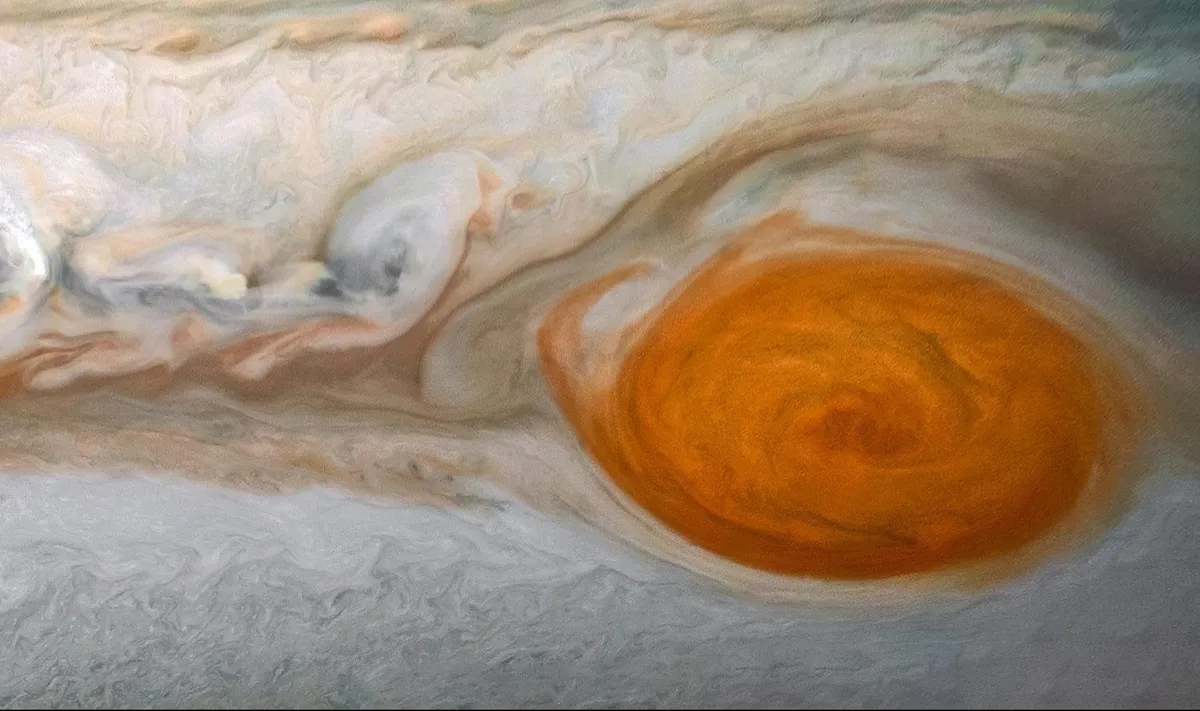Images and a timelapse video of Jupiter's Great Red Spot captured by the Hubble Space Telescope suggest the huge storm is not as stable as it might seem.
Hubble observations of the storm, which is about the size of Earth, were made over 90 days between December 2023 and March 2024.
More about the Great Red spot

Image processing by Kevin M. Gill, © CC BY
"While we knew its motion varies slightly in its longitude, we didn't expect to see the size oscillate. As far as we know, it's not been identified before," says Amy Simon of NASA's Goddard Space Flight Center in Greenbelt, Maryland, lead author of the study.
"This is really the first time we've had the proper imaging cadence of the Great Red Spot.
"With Hubble's high resolution we can say that the Great Red Spot is definitively squeezing in and out at the same time as it moves faster and slower.
"That was very unexpected, and at present there are no hydrodynamic explanations."

Hubble's storm study
The astronomers behind this Hubble Space Telescope study of Jupiter's Great Red Spot say the results could help contextualise what we know about hurricanes on Earth within the wider Solar System.
And the data could also help astronomers understand more about weather on planets orbiting other stars, known as exoplanets.
"When we look closely, we see a lot of things are changing from day to day," says Simon of the study into the Great Red Spot.

Ultraviolet-light images show the core of the storm is brightest when the Great Red Spot is largest in its oscillation cycle.
"As it accelerates and decelerates, the Great Red Spot is pushing against the windy jet streams to the north and south of it," says co-investigator Mike Wong of the University of California at Berkeley.
"It's similar to a sandwich where the slices of bread are forced to bulge out when there's too much filling in the middle."
Wong says that in the case of Neptune, the farthest planet from Earth in the Solar System, dark spots are seen drifting without jet streams holding them in place.
The team predict the Great Red Spot will continue shrinking before adopting a more stable, less-elongated shape.
"Right now it's over-filling its latitude band relative to the wind field. Once it shrinks inside that band the winds will really be holding it in place," says Simon.
Read the full paper at iopscience.iop.org/article/10.3847/PSJ/ad71d1
